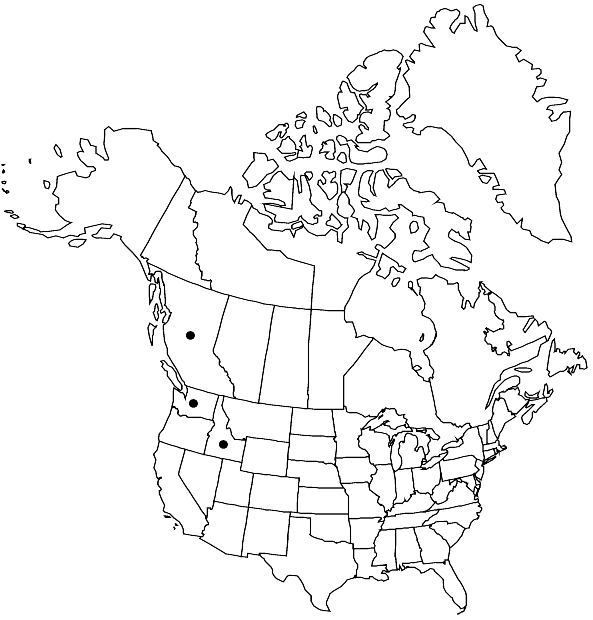Schistidium heterophyllum
Bryologist 93: 468. 1990,.
Plants in open to compact, usually fragile (individual stems easily separated) tufts or mats, olivaceous, brownish green, or nearly black. Stems 1–2.5 (–4) cm, central strand distinct. Leaves erect, rarely curved, usually imbricate when dry, ovatelanceolate to ovate-triangular, keeled distally, concave proximally, (0.8) –1.6–2.4 (–3) mm, 2-stratose distally; margins plane or erect, sometimes incurved, smooth, 1-stratose or 2-stratose; apices acute or somewhat obtuse; costa usually excurrent as a spinulose-denticulate or nearly smooth, usually straight, often very long-decurrent awn, smooth; basal marginal cells short-rectangular or quadrate, sometimes with transverse walls thicker than longitudinal walls, trigonous; distal cells quadrate, ovate, or short-rectangular, 5–6 (–8) µm wide, smooth, straight or weakly sinuose. Sexual condition dioicous. Capsule dark reddish-brown, short-cylindric or cupulate, 0.8–1.1 mm; exothecial cells isodiametric or oblate, usually thin-walled; stomata present; peristome patent, 350–550 µm, red, finely papillose, strongly perforated. Spores 10–13 µm, finely papillose.
Phenology: Capsules mature late spring to early summer.
Habitat: Rock in open to shaded habitats
Elevation: moderate elevations (300-1200 m)
Distribution

B.C., Idaho, Wash.
Discussion
The imbricate, concave, and long-awned leaves (the concentration of awns at growing tips of the branches resemble brushes), with plane or erect margins and 2-stratose distal laminae, along with the ease by which patches fragment into individual stems, make Schistidium heterophyllum, in most cases, an easily recognized species, even though it is usually sterile. Schistidium tenerum is similar in most of these characters, but is much smaller and usually forms more compact cushions. Also, its distal laminae are unevenly 2-stratose, its leaf margins are recurved, and its awns are often strongly flexuose when dry. Where their ranges overlap in arid regions of western North America, S. heterophyllum can be easily mistaken for the macroscopically similar Grimmia laevigata. Both species are usually sterile, are of the same coloration and size, and have similar leaf characteristics. These taxa can be separated by a number of characters: the costa is pronounced on the abaxial leaf surface of S. heterophyllum and forms a distinct ridge, whereas the costa of G. laevigata is flat or only weakly raised above the laminal surface, its leaves are usually broader and not as imbricate when dry, its distal leaf cells are wider (7–9) than those of S. heterophyllum (5–6), and its leaves usually narrow considerably more to the stem base than do those of S. heterophyllum.
Selected References
None.
Lower Taxa
"um" is not declared as a valid unit of measurement for this property.